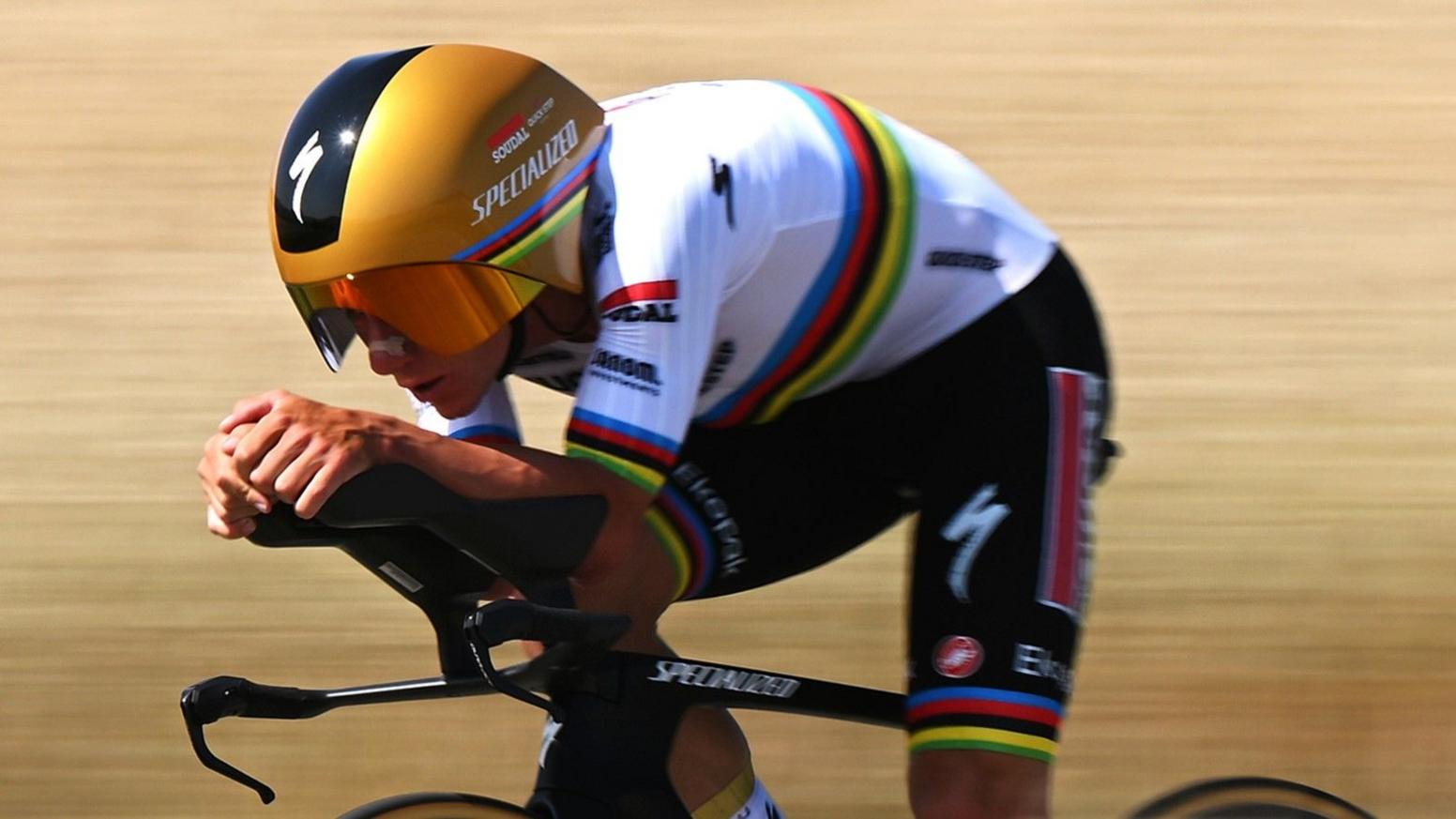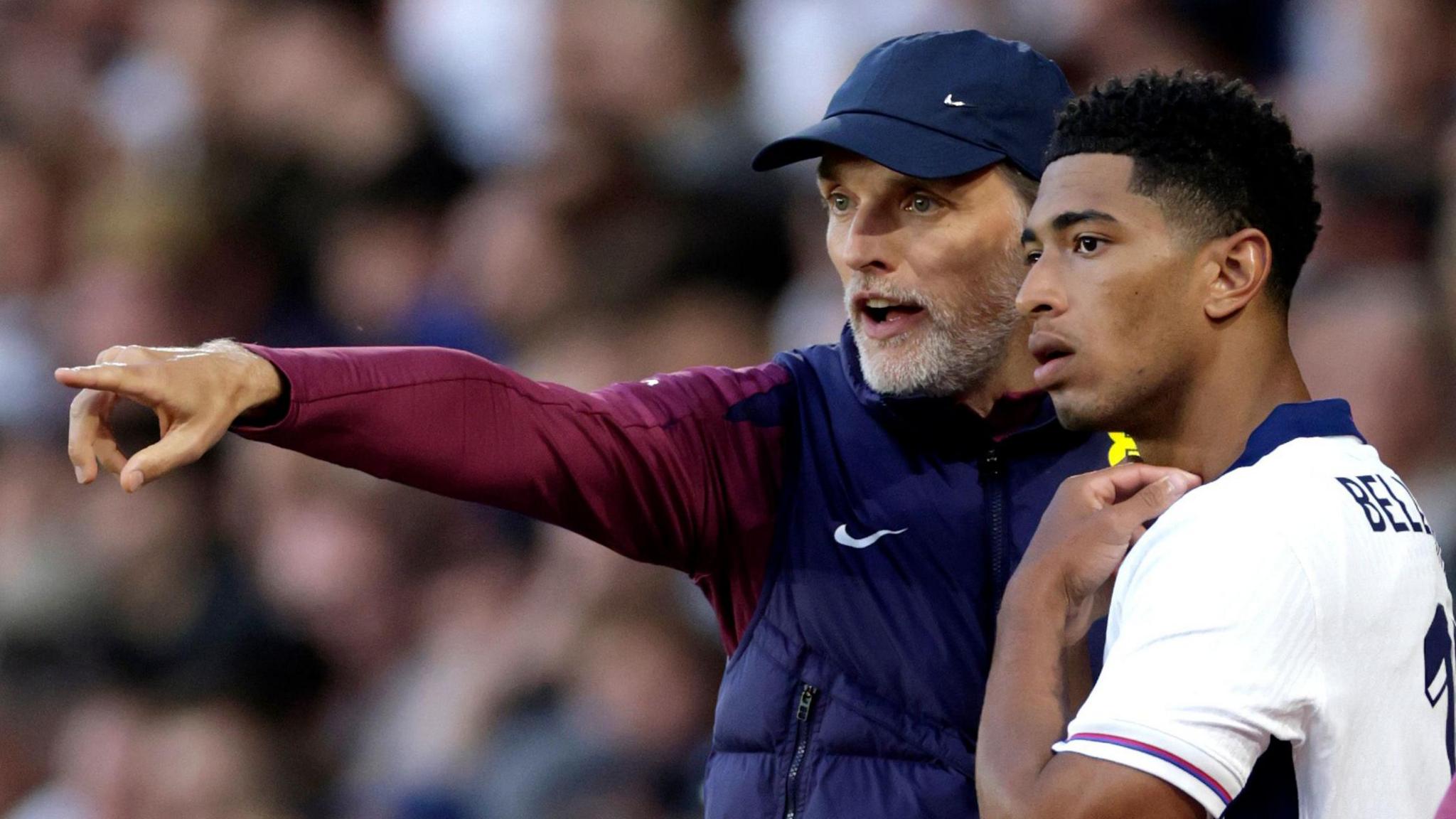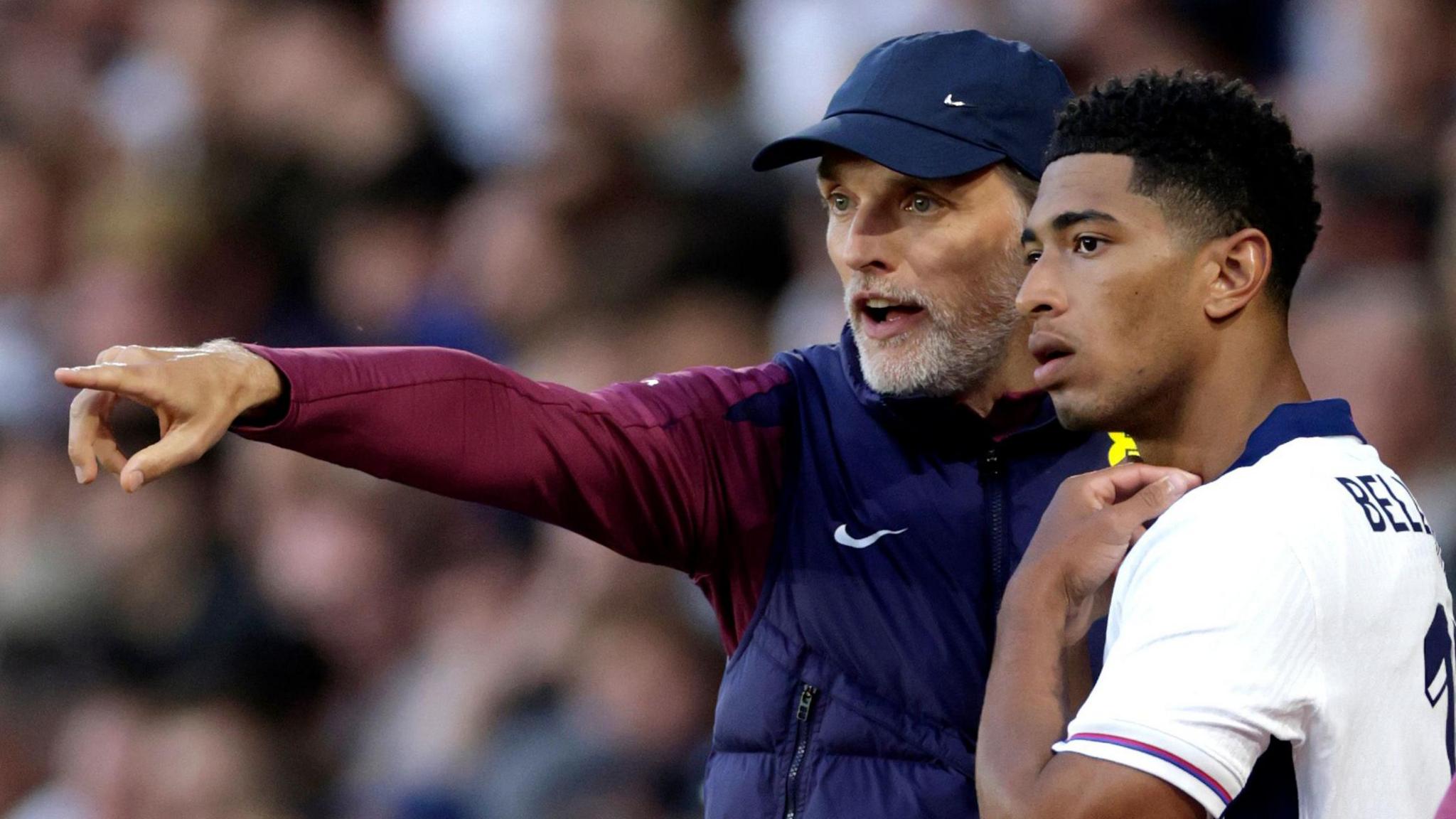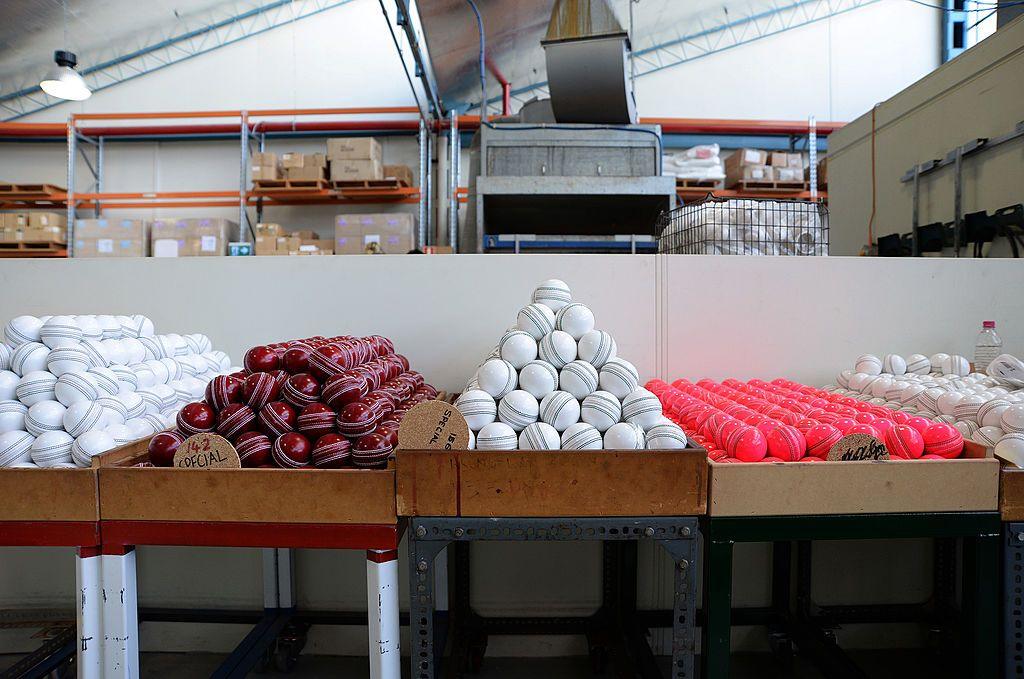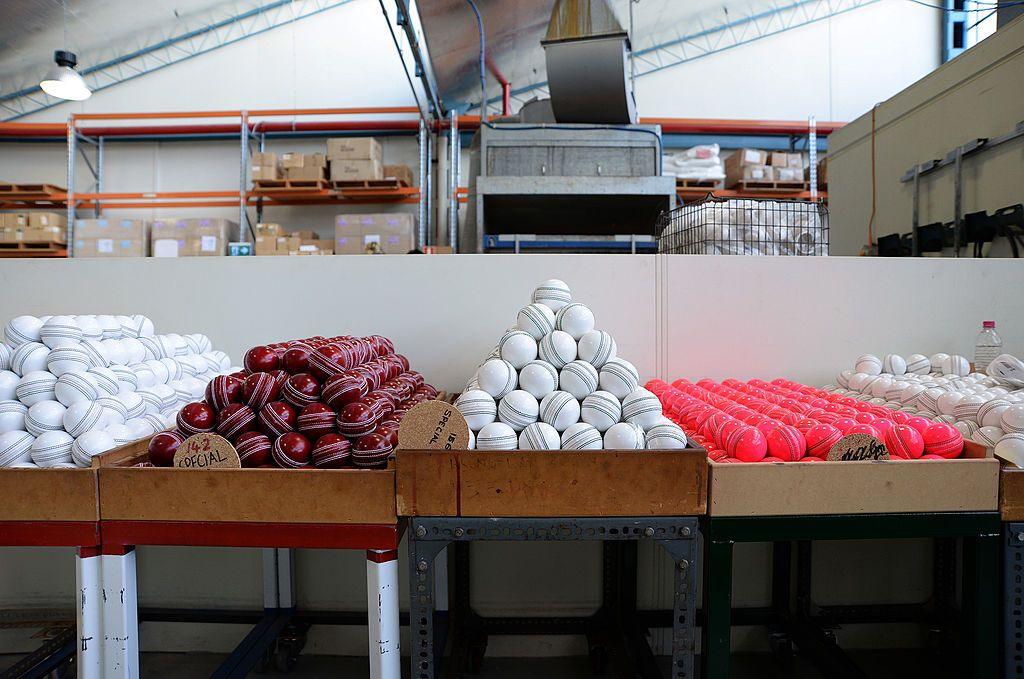Belgium’s Remco Evenepoel has taken the overall lead of the Criterium du Dauphine after victory in the time trial on stage 4.
The reigning Olympic and world time trial champion beat nearest rival Jonas Vingegaard of Visma-Lease a Bike by 21 seconds on the 17.4km course.
Soudal-Quick Step’s Evenepoel, considered to be the world’s third best rider, will be competing against rivals Tadej Pogacar and Denmark’s Vingegaard at the Tour de France next month.
Reigning Tour champion Pogacar of UAE Team Emirates-XRG was a surprising 49 seconds down on the day to Evenepoel in a discipline in which the Slovenian is often peerless.
Pogacar trails Evenepoel by 38 seconds in the general classification, with Vingegaard 16 seconds down in fifth place.
Germany’s Florian Lipowitz of Red Bull-Bora-Hansgrohe is second in the GC, four seconds down.
“I’m very happy with this victory – the thousandth for the team,” said Evenepoel after completing the course in his special Olympic gold helmet. “This one is for Patrick [Lefevere, former boss] – for everything he did for the team.
“I think in terms of [my] weight, it’s already pretty good – much better than last year – I’ve been working super hard behind the scenes.”
The race, which takes place across the Dauphine region of south-east France, is the traditional warm-up for the Tour.
Only four times in the last 10 editions has the overall winner gone on to be victorious in the Tour.
Spaniard Ivan Romeo of Movistar lost the yellow jersey after victory on stage three, finishing one min 25 secs down to Evenepoel.
The eight-day stage race moves on to Saint Priest on Thursday for a hilly 183km test to Macon.
Stage four results
1. Remco Evenepoel (Bel/Soudal-Quick Step) 20mins 51secs
2. Jonas Vingegaard (Den/Visma-Lease a Bike) +21secs
3. Matteo Jorgenson (USA/Visma-Lease a Bike) +38secs
4. Tadej Pogacar (Slo/UAE Team Emirates-XRG) +49secs
5. Florian Lipowitz (Ger/Red Bull-Bora-Hansgrohe) +57secs
6. Mathieu van der Poel (Ned/Alpecin-Deceuninck) +1mins 2secs
7. Remi Cavagna (Fra/Groupama-FDJ) +1min 7secs
8. Eddie Dunbar (Irl/Jayco-AlUla) +1min 10secs
9. Tobias Foss (Nor/Ineos Grenadiers) +1min 10secs
10. Paul Seixas (Fra/Decathlon-AG2R La Mondiale) +1min 12secs
General classification after stage four
1. Remco Evenepoel (Bel/Soudal-Quick Step) 14hrs 31mins 8secs
2. Florian Lipowitz (Ger/Red Bull-Bora-hansgrohe) +4secs
3. Ivan Romeo (Spa/Movistar) +9secs
4. Mathieu van der Poel (Ned/Alpecin-Deceuninck) +14secs
5. Jonas Vingegaard (Den/Visma-Lease a Bike) +16secs
6. Eddie Dunbar (Irl/Jayco-AlUla) +30secs
7. Harold Tejada (Col/XDS Astana) Same time
8. Tadej Pogacar (Slo/UAE Team Emirates-XRG) +38secs
9. Matteo Jorgenson (USA/Visma-Lease a Bike) +39secs
10. Louis Barre (Fra/Intermarche-Wanty) +1min 3secs
Related topics
- Cycling
